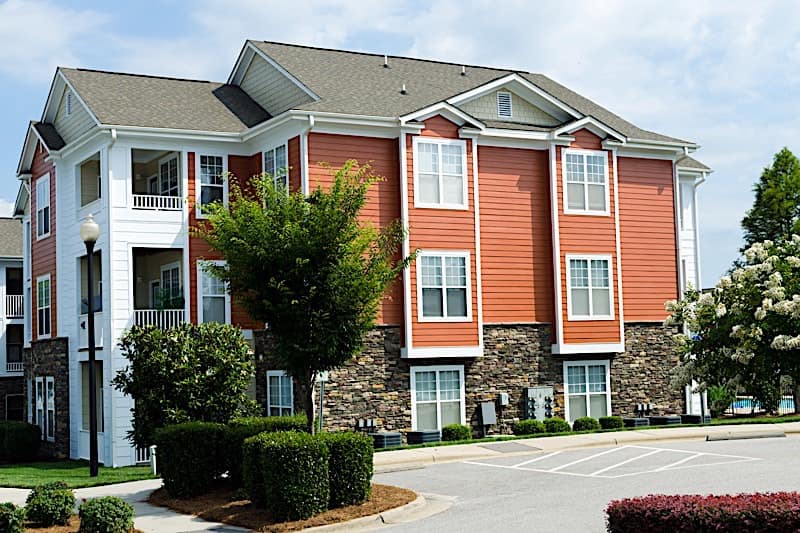What if someone told you that you could lease a property to a tenant who will not only pay rent but will also pay for other property costs that typically eat into your profits? This does exist as a little-known investing strategy called a triple net lease. If you’ve never heard of it before, it’s high time that you added it to your investing dictionary. Keep reading to find out if a triple net lease (NNN) is a good fit for your business, and to see if it might finally entice you to get into the commercial real estate investing game.
What Does NNN Mean?
A triple net lease is a type of real estate lease agreement in which tenants (usually in the commercial sector) agree to pay for each and every expense associated with the subject property. In addition to rent and utilities, tenants who sign a triple net lease will also be expected to pay three additional obligations: incurred taxes, building insurance, and maintenance expenses (each obligation represents one “N” in a triple net lease). In exchange for taking care of the expenses that the landlord usually assumes, however, tenants can often negotiate a lower rent payment. On the other hand, traditional commercial lease agreements usually coincide with higher rents, utilities, and an expectation that the landlords will cover everything else. Due to their relatively risk-averse nature and dependable income, triple net leases have become a common vehicle amongst investors.
Other Net Leases
A triple net lease, otherwise known as an “NNN lease,” is just one of many commercial property net leases. In fact, there are three primary net lease options tenants and landlords may choose between: triple, double, and single. As we have already discussed, triple net leases will require tenants to pay all of the expenses associated with a building (in addition to rent and utilities). A double net lease (NN), on the other hand, requires tenants to pay two additional obligations, in addition to rent and utilities. Specifically, double net leases will require tenants to pay rent, utilities, property taxes, and insurance premiums. The maintenance costs will remain the responsibility of the landlord. Finally, a single net (N) lease will only add one obligation to tenants’ expected payments: property taxes. That means the tenants of a single net lease will be required to pay rent, utilities, and property taxes. Compared to traditional lease agreements, baseline rents associated with all three net lease options are low. However, baseline rents tend to decrease even more with the addition of each obligation.
[ Thinking about investing in real estate? Register to attend a FREE online real estate class and learn how to get started investing in real estate. ]

How Do You Calculate Triple Net Lease?
There is more than one way to calculate a triple net lease, but the most common method includes adding the total annual costs of each obligation together (property taxes, maintenance costs, and building insurance). With all obligations accounted for and added together, divide the resulting number by 12 to receive the total monthly expenses. In a single-tenant building, simply add the total monthly expenses to the monthly rental rate to determine the total a tenant can expect to pay each month on a triple net lease. The equation will look something like this:
Baseline Annual Rent + Annual Property Taxes + Annual Maintenance Costs + Annual Insurance Costs / 12 (Months) = Triple Net Lease Agreement
Triple Net Investing
Triple net investing can be a beneficial arrangement for both investors and lessees. Although triple net properties may seem like a bad deal for tenants at first glance, they often agree to take on the extra costs because the rental price is generally much lower than a standard lease agreement.
For investors, triple net investments can be enticing for their promise of stable income streams with relatively low risk. Before getting into the benefits, it is important to first understand what investing in triple net properties looks like.
Typically, one single tenant can occupy several NNN properties at once. For this reason, this type of investing often comes in the form of a portfolio of more than one property and is prominent in the commercial real estate sector. Some examples include office spaces, banks, shopping malls or restaurants. Touched on earlier, a larger commercial tenant will agree to pay ongoing maintenance costs, property insurance and taxes in addition to the rental price one or more properties.
Benefits of Investing in NNN Properties
Triple net properties provide investors with the main attraction of a steady income associated with relatively low risk. The lease agreement setup lends itself to commercial tenants who will occupy a space long-term. Once an investor has identified a reliable tenant, they can count on a steady rental income that will be unaffected by costs typically paid for by the landlord and instead paid for by the tenant. Below are some of the most prominent benefits of investing in NNN properties:
-
Steady passive income
-
No fluctuating maintenance or repair costs
-
Several rental streams from a single tenant
-
Tax breaks
-
Participate even if you are a small investor
Maintenance and repairs on a building can be highly unpredictable, making it tricky to forecast income. When tenants agree to pay for maintenance and repairs costs on a property, investors can truly let out a sigh of relief. In addition, a single large commercial tenant will often occupy several NNN properties at once. Although an investor will have to put in plenty of work in the front end to identify a reliable, credit-worthy tenant, they can minimize their overall risk by having multiple, stable rental income streams coming from one reliable source. An added benefit of this investment vehicle is that once a triple net lease property is sold, the capital can be rolled into another NNN without paying taxes. This is done by utilizing a 1031 tax-deferred exchange. For more information, check out the Investor’s Guide to the 1031 Exchange.
Finally, smaller investors need not feel left out of the ring of triple net lease investing. Anyone can participate by seeking out triple net investing portfolios offered through real estate investment trusts (REITs).
[ Thinking about investing in real estate? Register to attend a FREE online real estate class and learn how to get started investing in real estate. ]

Cons Of Triple Net Leases
A triple net lease may sound like the perfect arrangement for investors, but there are some costs to be aware of. As mentioned above, triple net leases often generate lower rent than a traditional lease arrangement. While this makes perfect sense considering the added costs tenants will incur, it does limit the revenue potential of the property. With a triple net lease, investors may not be able to increase the rent at the same rate or add additional costs, such as charging for added amenities. Further, depending on property appreciation rates in the area investors could lose out on potential cash flow from raising the rents over time.
With that being said, investors should be wary of turnover in a triple net lease. If the tenant customizes the property in any way, it could be hard to find a new tenant after the conclusion of the lease. For example, there will be renovation costs to adjust the floor plan, remove customizations, or add extra rooms and office spaces. In some ways, these costs are to be expected with changes in commercial tenants. However, triple net leases lend themselves to longer rental terms, meaning it could be more challenging to handle tenant turnover.
Is A Triple Net Lease A Good Idea?
The concept of whether or not a triple net lease is a good idea is relative to the current situation of each party on the agreement. For the most part, however, tenants and landlords will be awarded certain benefits in the event of a triple net lease a agreement. Tenants, for example, will be granted more freedom to do what they please with the property because they are paying for the maintenance. That’s not to say tenants have free reign over their renovations, but rather that they may be able to customize certain aspects without the intensive capital investment of buying the property outright. Triple net leases also offer tenants protection from malicious increases. There are often caps on tax and insurance increases, which gives tenants more flexibility to spend their rent. Landlords, on the other hand, can expect constant, reliable cash flow from tenants, and aren’t expected to take much of an active role in management of the property.
Summary
Most investors regard triple net lease investments as a buy-and-hold strategy. By seeking out solid and reliable long-term tenants, savvy investors can lock down a steady, reliable income stream that can last for years or even decades. Adding such a reliable income stream can not only boost the bottom line of your portfolio, it can give you the confidence you need while pursuing other higher-yield investments.
Ready to start taking advantage of the current opportunities in the real estate market?
Click the banner below to take a 90-minute online training class and get started learning how to invest in today’s real estate market!


